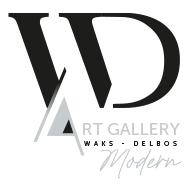Artist: Bernard QUENTIN (1923-2020)
Title: Composition, 1965
Technique and medium: Gouache on isorel
Particularities of the work: Signed and dated 1965 on the back
Dimensions: 24 x 33cm
Condition: Good
Provenance: Certified origin, the invoice engages the responsibility of the gallery as to the authenticity of the work.
Expert comment and biography: Born in 1923, Bernard Quentin arrived in Paris around 1940 to study painting, sculpture and architecture at the École Nationale Supérieure des Arts Décoratifs and the École Nationale Supérieure des Arts Décoratifs. fine arts. Between 1942 and 1945, he frequented the house of thought where he met Picasso and painted on the theme of the horrors of war as his elder did with Guernica. It was at this time that Bernard Quentin was propelled onto the front of the stage with works that can be described as abstract expressionist. Seduced then by the poetic primitivism of the works of Paul Klee, his art really reveals itself. He frequents all artistic circles, the existentialists, the surrealists (Wols and Camille Bryen) and the band of Boris Vian (Jean-Paul Sartre, Maurice Merleau-Ponty, Anne-Marie Cazalis and Juliette Gréco with whom he lives). With the meeting of Isidore Isou, Bernard Quentin rocks in the lettrism which is one of the main avant-garde movements since Dadaism and surrealism. Artists take over all areas of Knowledge and Knowledge and mainly the arts with poetry, painting, novels, cinema and photography. His ambition is then to link scripturality and art, he centers his works on writing, wishing to find a universal language, comprising symbols understandable by all. Words then become the very subject of his works and he draws inspiration for this from primitive calligraphy such as Egyptian hieroglyphics and rock inscriptions. He uses color to situate his signs grammatically, he uses blue for adjectives, red for nouns and orange for articles and pronouns. He is then described by Dali as a pioneer of cybernetic art and electronic writing. In the 1960s, he gradually moved away from painting to concentrate on sculpture. We also owe him the first inflatable sculptures, exhibited in Paris and New York and which will be perceived as heralding Land Art. In 1977, he created, with other artists, the ART+ collective, which aims to extend art in monumental integrations into the environment.



